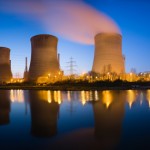 Burning fossil fuels – gas, coal, oil and more recently shale gas – are considered the most economic ways to generate electricity.
Burning fossil fuels – gas, coal, oil and more recently shale gas – are considered the most economic ways to generate electricity.
Fossil fuels however, are a finite resource, the cost of which increases sharply as the availability decreases. They account for the majority share of electricity produced in the UK, but major problem areas are security of supply and environmental factors.
We rely primarily on foreign imports of coal, oil and gas – all subject to world-market forces of supply and demand. It means the cost of the electricity is tied to the price of the fuel used to produce it. And the more we import, the more control we lose over our ability to set a fair price for the electricity we consume. The trend, as we all know too well, is increasingly expensive bills. What’s more, having to rely on imports means we have less security of supply. As such, we are increasingly dependent upon good relations with other countries for supply.
Greenhouse Gases
Global warming is a proven phenomenon of average heat rise, to which carbon dioxide is considered the largest greenhouse gas contributor from burning fossil fuels. Although carbon dioxide constitutes a very small fraction of Earth’s atmospheric mix, it has increased by 50% since the beginning of the industrial revolution, causing much irreversible damage to the biosphere. The ocean is heating at a rate currently equivalent to 5 Hiroshima bombs every second. Equivalent to moving south on land by 20 km every year. Carbon dioxide remains in the atmosphere for 300-1000 years before it’s sequestered by oceans and soil. A Life Cycle Assessment of Electricity Generation Options by the United Nations Economic Commission for Europe report Report rates for coal 751 g – 1095 g CO2 eq./kWh and for natural gas, 403–513 g CO2 eq./kWh. Nuclear is lowest at 5.1-6.4 g CO2 eq./kWh.
The effects of various energy policies on both costs and carbon emissions from electricity generation are reflected in a colourful and accessible format via electricitymap.org.
Methane is the second largest contributor to global warming, having more than 80 times the warming power of carbon dioxide over the first 20 years after it reaches the atmosphere. Even though CO2 has a longer-lasting effect, methane sets the pace for warming in the near term. It spends about 9 years in the atmosphere compared to 300-1000 years for carbon dioxide. Satellites monitor for methane leaks from oil and gas extraction points [1]. Around 50% of the high leak emissions come from regions with activities in oil and gas, coal mining and other heavy industries. Members to the COP26 summit in Glasgow 2021 committed to goals to reduce methane emissions by 2030.
While new technologies known as Carbon Collection and Storage (CCS) are touted as being able to potentially ‘clean up’ fossil fuel power generation, they are currently unproven.
Other pollutants
The release of hazardous chemicals from fossil fuel combustion causes unknown quantities of people to be diagnosed with ailments such as heart disease, cancer and respiratory disease and developmental impairments – especially vulnerable groups such as children and the elderly [2].
Coal (and biomass) are generally considered ‘dirtier’ than gas due to the high amount of particulate matter emitted. However, they remain strong baseload electricity suppliers, which ought to be replaced by nuclear energy where possible.
Pollutants of concern to health include oxides of nitrogen (NOx), oxides of sulphur (SOx), and fine particulates which cannot be filtered, including heavy metals. Dioxins can also be formed during some combustion processes, and these are carcinogenic. All of these are carried far from the stack and are thought to contribute, to a degree to reduced quality of life for asthma sufferers for example.
Fly ash, the solid residue from burning coal, which is laden with toxic heavy metals and is also more radioactive than the emissions allowed by the nuclear industry, tends to be dumped.
Resilience
Being properly designed to high safety standards, nuclear power plants are more robust than conventional fossil fuel plants [3].
For example, during the big freeze of 1963 in the UK, coal was frozen and unable to be processed at the coal-fired power stations. It was up to those operating nuclear power stations of the time to run (at 98.5% of fuel load) through the whole of January 1963.
The Onagawa plant in northeast Japan was the closest nuclear plant to the epicentre of the magnitude-9.0 earthquake that struck in 2011. The reactor survived, and was finally approved for restart in 2020. The Japanese authorities there want to become more self reliant, as well as increasing their share of low carbon energy [4].
Leave a Reply
You must be logged in to post a comment.